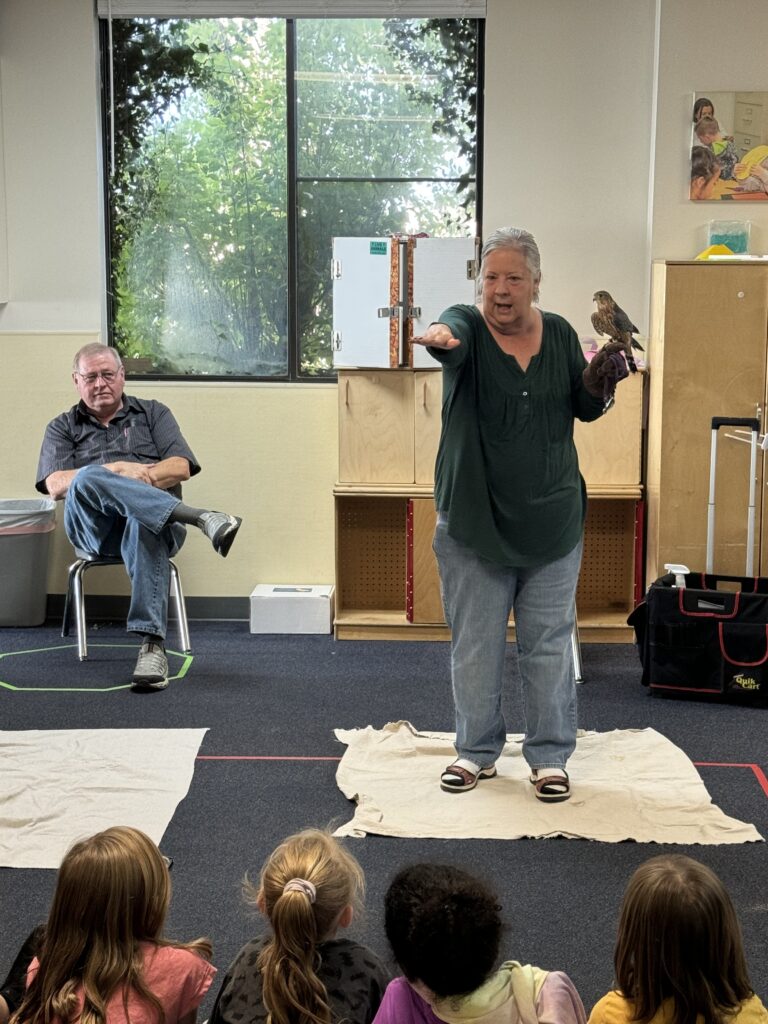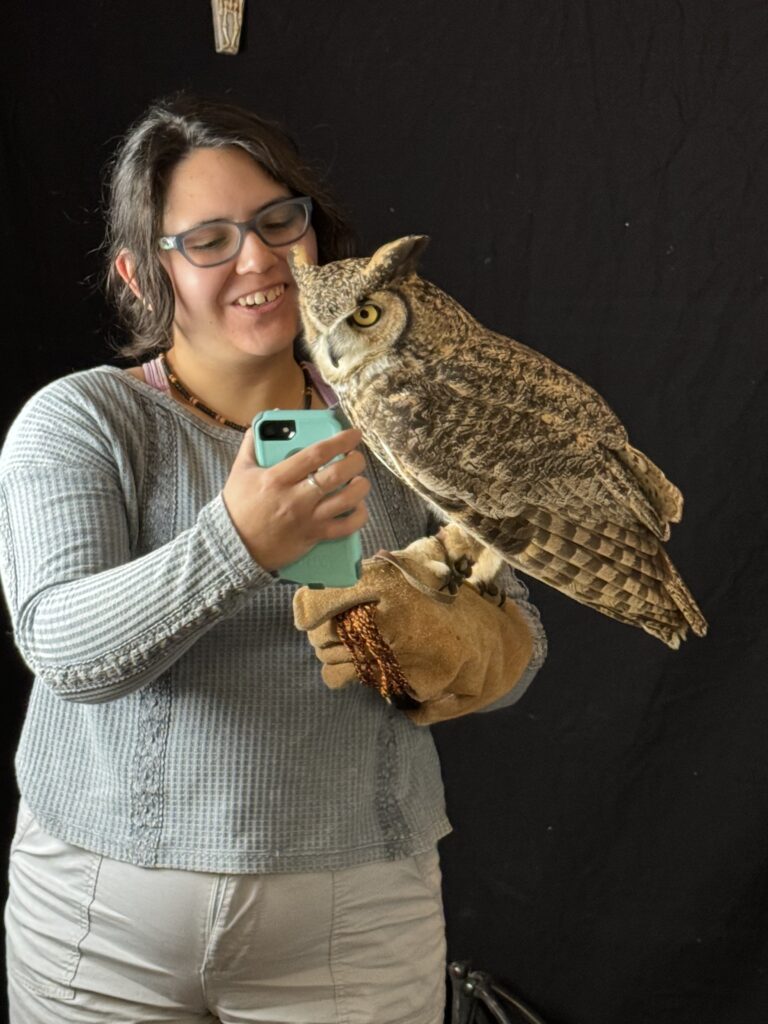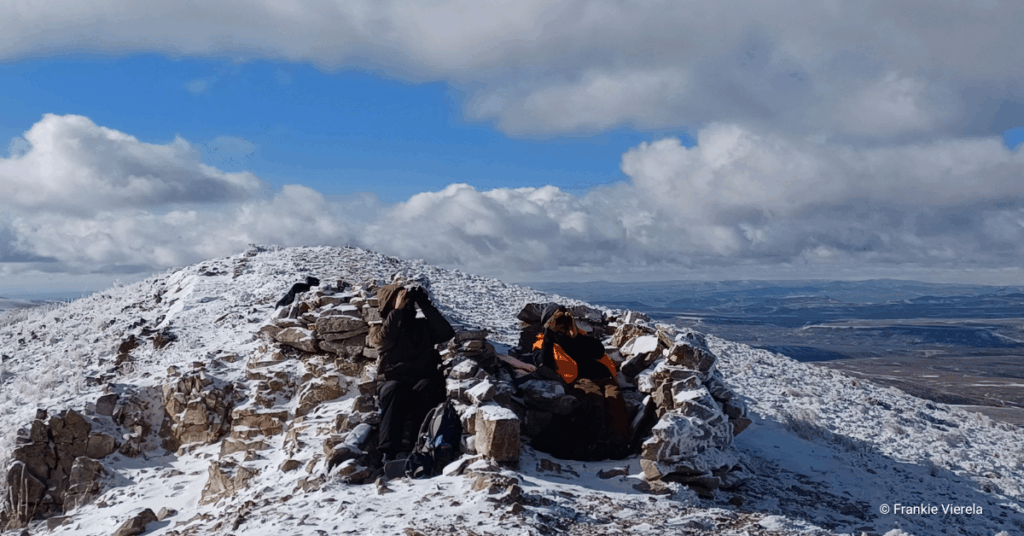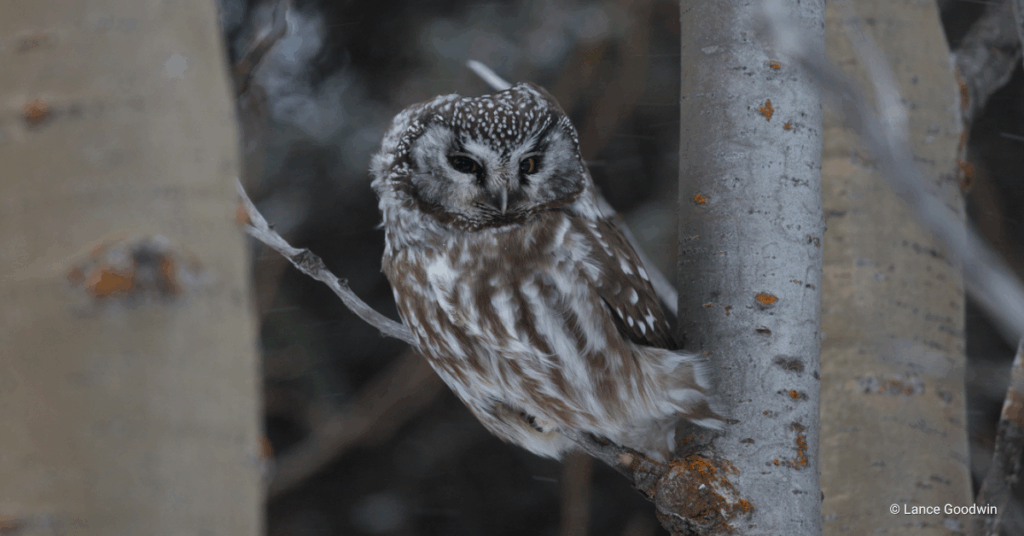With the word “International” in our name, you might understandably assume we have far more staff than we do. Although we have just four full-time educators on our staff, we still manage to deliver 500+ educational programs to 30,000 folks each year. So what is the key to our ability to bring our programming to so many when our staff are so few? The answer is our amazing volunteers, or as we call them, our education docents.

One thing that sets HawkWatch International (HWI) apart from many other organizations that house non-domestic animals, is that we empower our docents to work hands-on with our Raptor Ambassadors. To reach that point, however, we must invest extensive time in training volunteers to care for and handle these birds to a high standard.
After the initial onboarding process, where docents become familiar with our organization and the work we do at HWI, we begin regular training sessions where volunteers become sub-permittees on our Raptor Ambassador education permits from the United States Fish and Wildlife Service. To become sub-permitted, they must demonstrate extensive knowledge of the individual birds we house, and show strong competency in handling each bird they seek to become a sub permittee on. Then, they can begin taking that bird to programs ranging from simple meet-and-greets to more formal presentations. Experienced docents may even be asked to join our Bird Care Team, and help with daily husbandry tasks for our Raptor Ambassadors.
Some organizations have chosen to step away from this model because of the potential risks of letting volunteers work with birds. It is true there is a liability that comes with letting members of the public with no previous experience work with ambassador animals. However, we feel our program is successful because of the high standards we expect from our docents. The rigorous training, program requirements, and quarterly professional development keep our docents in compliance with regulations and on top of their game. In addition, docents are critical to our ability to deliver programs using an outreach-based model. Unlike other organizations, HWI does not have a public facility where we welcome visitors since we are primarily a scientific research organization. This means we have to bring our programs to the public, requiring even more people power.
HWI wouldn’t be able to reach nearly as wide of an audience of learners were it not for our docents. They allow us to make the biggest impact possible by supporting our education goals of delivering programs to every high school biology student in Utah on a three-year rotating basis, as well as providing many other community outreach programs—especially to folks who may have barriers when it comes to accessing environmental education and opportunities to view native wildlife.
Last year, almost half of our 574 programs were docent-staffed. Of those, 106 were specifically for underserved or underrepresented audiences in natural spaces. Were it not for the hard work of our docents, we wouldn’t have been able to reach nearly as many learners, especially those who may need these education opportunities the most.
Our operating model of having our docents work directly with our birds may make us different from many other similar organizations, but it allows us to close the nature gap for as many learners as possible on a tight budget. Plus, our docents become ambassadors themselves! As these volunteers have amazing opportunities with incredible animals, they become strong advocates for our mission, making it possible for us to work towards conserving raptors and our shared environment. It’s hard to fully express how much our docents mean to our education team and our entire organization, but I can say one thing with absolute certainty—we couldn’t do it without them.

This blog was written by Laura Cleveland, one of HWI’s Educators. You can learn more about Laura here.



